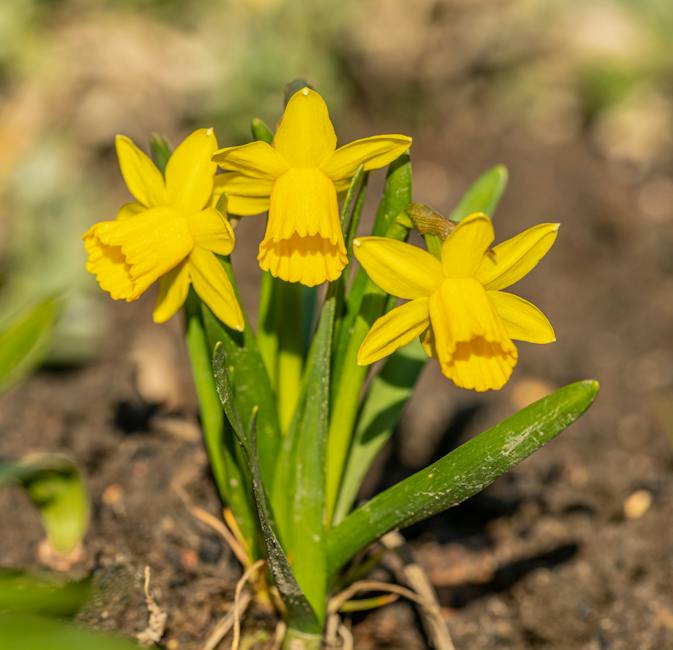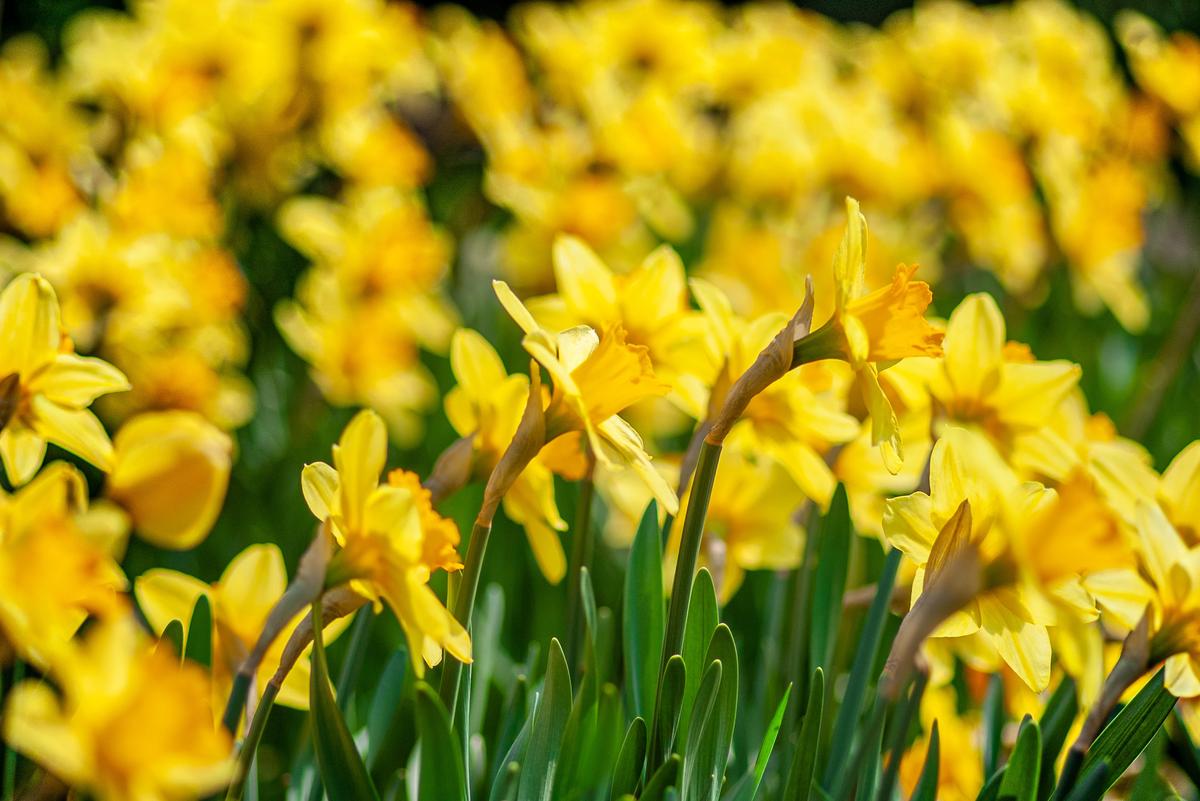Nurturing Daffodils after Bloom Season

Whether cued by the charming spectacle of your blossoming daffodils flourishing in full bloom, or inspired by a newfound love for gardening, nurturing daffodils after they’ve flowered can seem a daunting task. Fear not, however! With our exploration of simple and effective maintenance techniques such as the art of deadheading, the essentials of care and maintenance, and the vital steps of preparing for the next blooming season, you’ll soon be equipped with the knowledge necessary to sustain the beauty that daffodils bring. In shedding light on the botanic particulars of these radiant blooms, we aspire to empower you with a nurturing understanding that not only ensures your daffodils stay vigorous, but truly thrives.
Deadheading Daffodils
Keep your garden bright and beautiful as a spring morning with the practice of deadheading, a simple technique that keeps your Daffodils in radiant health! The mild, carefree Daffodil may be an incredible burst of color to your garden, but to ensure its longevity, this humble hobbyist can’t sing enough praises of deadheading.
Let’s delve into the Why first. Daffodils, like other bulbous plants, naturally slide into setting seeds after their blossoms start to fade. They pour their energy and resources into ensuring the next generation, taking it away from the bulb. However, this can cause problems for your garden. Seed production can weaken the plant’s energy reserves, resulting in a less-vibrant showing in subsequent years. Deadheading conserves these resources by removing the old flowers and seed pods before the plant can devote energy to them. It effectively tells your Daffodils to refocus their resources on strengthening their bulbs, not on seed production.
Now that we’re aware of why it’s beneficial to practice deadheading let’s tackle the How. This process is a snap and takes only a few small steps, yet these steps can considerably affect your garden’s overall vitality.
- Identify the spent blooms: The first step is to watch and wait until the flowers begin to wilt and fade. This withering doesn’t typically occur immediately following peak bloom, but patience is key here.
- Prepare your tool: Arm yourself with a clean, sharp pair of garden shears. It’s crucial to use a clean tool to avoid spreading any disease that may be lingering.
- Make your cut: It’s time to snip! Simply cut off the faded Daffodil flower head, ensuring you leave the stem and leaves intact. Find the narrowing of the stem beneath the spent bloom and make your cut there. This method leaves the remaining plant to continue photosynthesizing.
- Repeat: Move from plant to plant, repeating the deadheading process until you’ve covered your entire Daffodil patch.
It’s vital to leave the Daffodil leaves untouched, as tempting as it might be to reach for the trimmer and tidy things up. These leaves are still hard at work—capturing sunlight and photosynthesizing it into plant food. The leaves supply the bulb with enough energy to survive through the fall and winter, and bloom again in all its glory next spring.
As you can see, deadheading is a simple yet vital part of Daffodil care. It requires little time or effort but pays back several fold in the form of vivacious, long-lasting flowers. So, don’t wait! Add this habit to your gardening routine today, and let your Daffodils shine season after season. Your future garden will thank you for it!

Care and Maintenance
Spoiling Your Daffodils Post-Flourishing: The Lowdown on An Issue All Plant Hobbyists Grapple With
After you’ve mastered the delicate art of deadheading your darling daffodils, it’s time to think beyond that, delving into the other facets of care these sturdy staples of Spring need to spring back every season. It’s not all about snipping spent blooms! When it comes to nurturing your daffodils after pistils fade, sunlight dims, and petals fall, there’s still plenty to keep an ambitious green-thumb busy.
Water Love: The Role of Moisture for a Flourishing Future
Water is the elixir that brings life to our beloved plants, so even after flowering, daffodils require a regular drink to nourish the bulbs. Too little leads to dehydration. Too much? Rotten bulbs and heartbreak. Therefore, deeply water the daffodils until the soil is thoroughly moist, without creating a swampy scenario. Making sure the ground drains well is just as crucial as the hydration itself.
Fertilize Thoughtfully: The Secret Recipe for Resilience
Post-flowering is the time when daffodils recover their energy and begin to store it for next year’s bloom. A bulb booster or slow-release granular fertilizer can be applied after the blooms fade. Root, flower, and bulb development are encouraged by phosphorus and potassium, whilst nitrogen assists leaf growth. Remember, don’t fertilize during flowering, to avoid diversion of energy from bloom to foliage.
Weed-Away: Your Billowy, Yellow Companions’ Arch-Nemesis
Keeping the daffodil bed free from weeds is as essential as that nifty deadheading routine. Weeds are notorious drain resources from the soil, ultimately stealing from your precious petals. A layer of mulch can keep the weed population in check and simultaneously add organic matter to the soil.
A Good Slumber: The Importance of A Down-Time
The next chapter in the post-flowering life of your daffodils involves a whole lot of doing nothing, for them that is, not for you. The daffodils need to turn yellow and die back naturally. This downtime allows the plant to channel nutrients back into the bulbs for next year’s blooming marvel. Disruption in this process may lead to weaker flowers, or worse, none at all.
The Takeaway: An After-Blossom Check-Up
So, you’ve successfully deadheaded your daffodils, splendid! However, the post-bloom season demands a well-rounded approach that includes watering, fertilizing, weed control, and letting nature take its course. These elements ensure your daffodils are set up for success, not just right now but long into the future, paving the way for a sprightly wave of yellow next Spring, and many Springs to come. Happy gardening!

Preparation for Next Blooming Season
Unrolling Into the World of Daffodil Nurturing: Post-Bloom Care and More!
With your Daffodils having gracefully concluded their show-stopping blooms, you’re perhaps wondering about the next course of action. Fret not, as we can ensure your Daffodils continue to captivate for seasons to come through effective post-bloom care. Your Daffodils long for some well-deserved care beyond deadheading, and that is just what we’ll provide today!
Watering your daffodils post-flowering requires a prudent eye. While it’s tempting to break open the water hose right away, it’s critical to remember that Daffodils prefer ‘drought-like’ conditions post-bloom. Once your Daffodils have ceased flowering, it’s best to reduce the frequency of watering. Remember, less is always more in this instance!
Moving to fertilization, a nutrient-rich diet can bolster the health of your Daffodils for the upcoming flowering season. A low-nitrogen, high-potassium fertilizer can work wonders for your Daffodils post-bloom. These fertilizers strengthen the Daffodil’s bulb and promote better bloom the following season. Simply sprinkle the fertilizer around the base of the plant, avoiding direct contact with the leaves.
Next, weed control around Daffodil beds is a priority that cannot be overlooked. Weeds compete for nutrition and water, cast shadows that can hinder photosynthesis, and, in some cases, are homes to pests or diseases. And our beloved Daffodils deserve better than that, don’t they? To keep weeds at bay, hand-pulling or hoeing ensures the Daffodils have a comfortable bed. But remember to weed vigilantly to avoid damage to the Daffodils.
Comprehending the lifecycle of Daffodils adds another layer of proficiency to your gardening skills. Don’t be alarmed when the verdant Daffodil leaves start turning yellow and wilt; they are simply preparing for their slumber. Let them die back naturally. This is nature’s clever way of ensuring the bulbs are stocked up for the next blooming season.
Lastlt, acknowledging the importance of post-bloom care is essential. It may seem like a long and weary process, with the wait for the next beautiful bloom even longer. But remember, every hassle is worth the reward when you see those golden blossoms sway!
Rest assured, following these post-blooming care rituals will make your Daffodil garden a recurrent spectacle of lively, vibrant colors, and make your heart skip a beat every single time. Until the Daffodils wake up from their slumber and gracing us with their charm again, happy gardening!

As we have navigated the enlightened path each daffodil boldly treks after flowering, it is clear that the journey towards the next bloom requires patience, attention, and love. By mastering the skill of deadheading, comprehensively executing care and maintenance, and diligently preparing for the next blooming season, you can pave the way for a vibrant future for your cherished daffodils. Fertilizing appropriately, understanding when to divide and replant, and appreciating the unique needs of your daffodils are all integral components of this journey. With these tools at your disposal, let each delightful daffodil in your garden serve as a testament to your dedication, passion, and learning in the fascinating realm of gardening.



